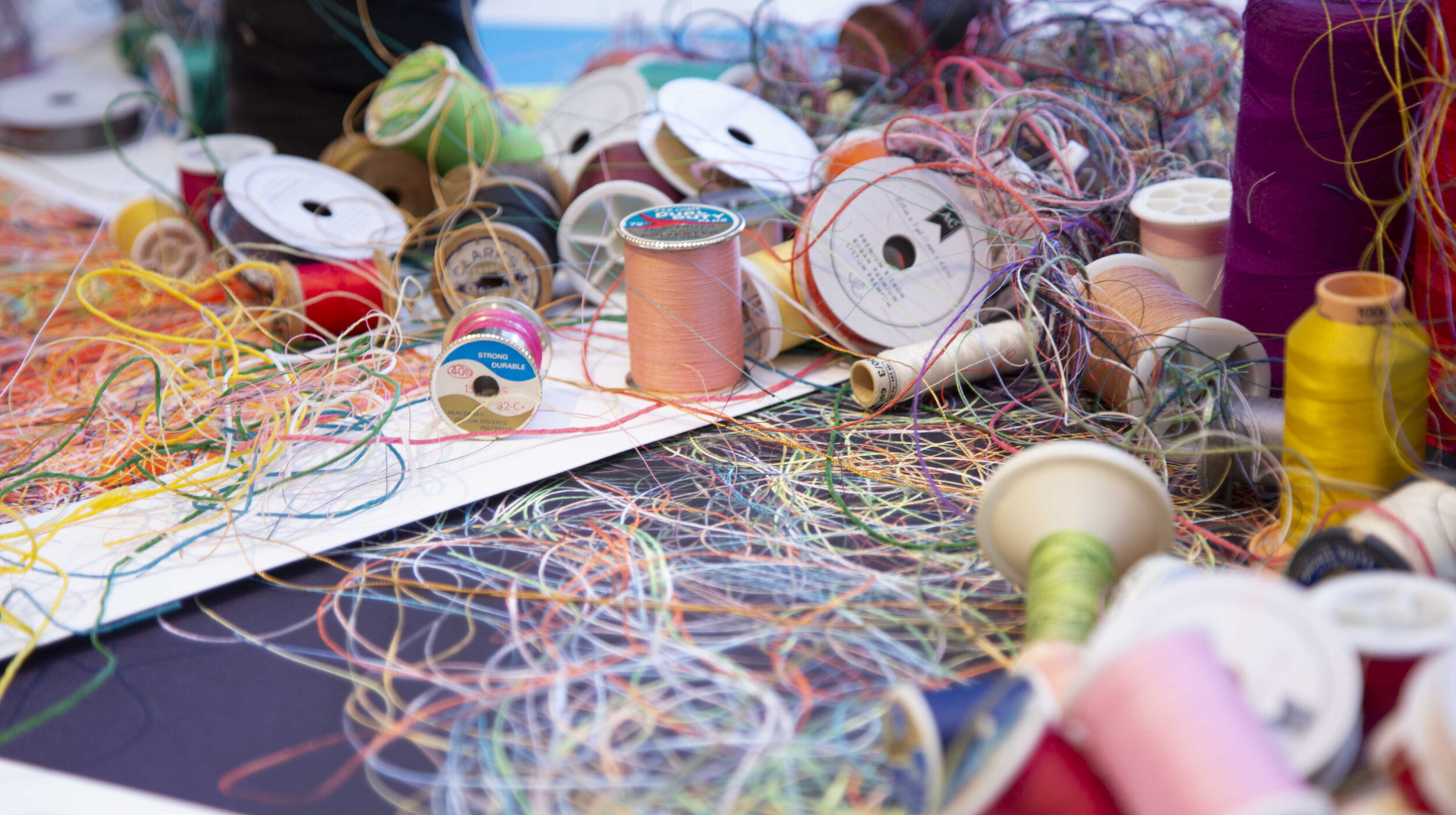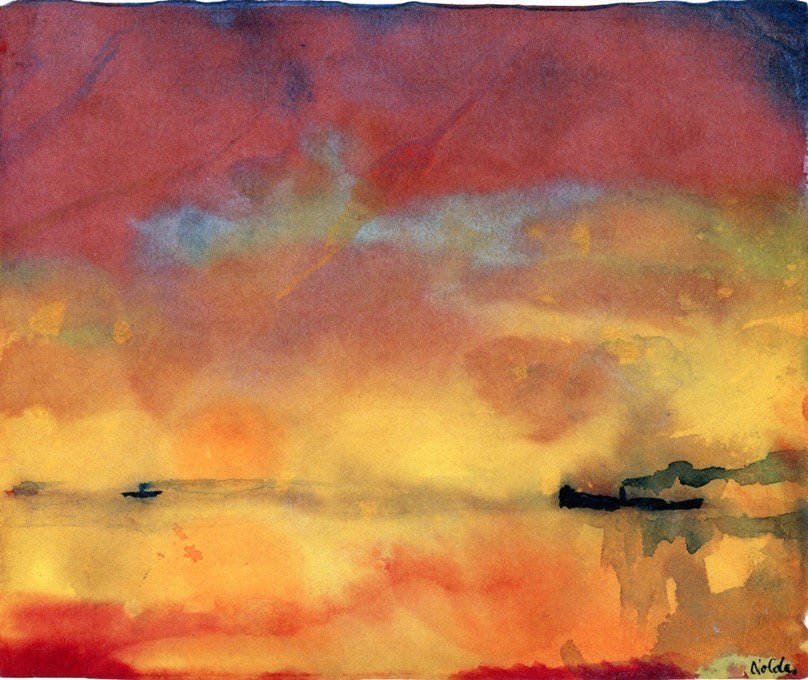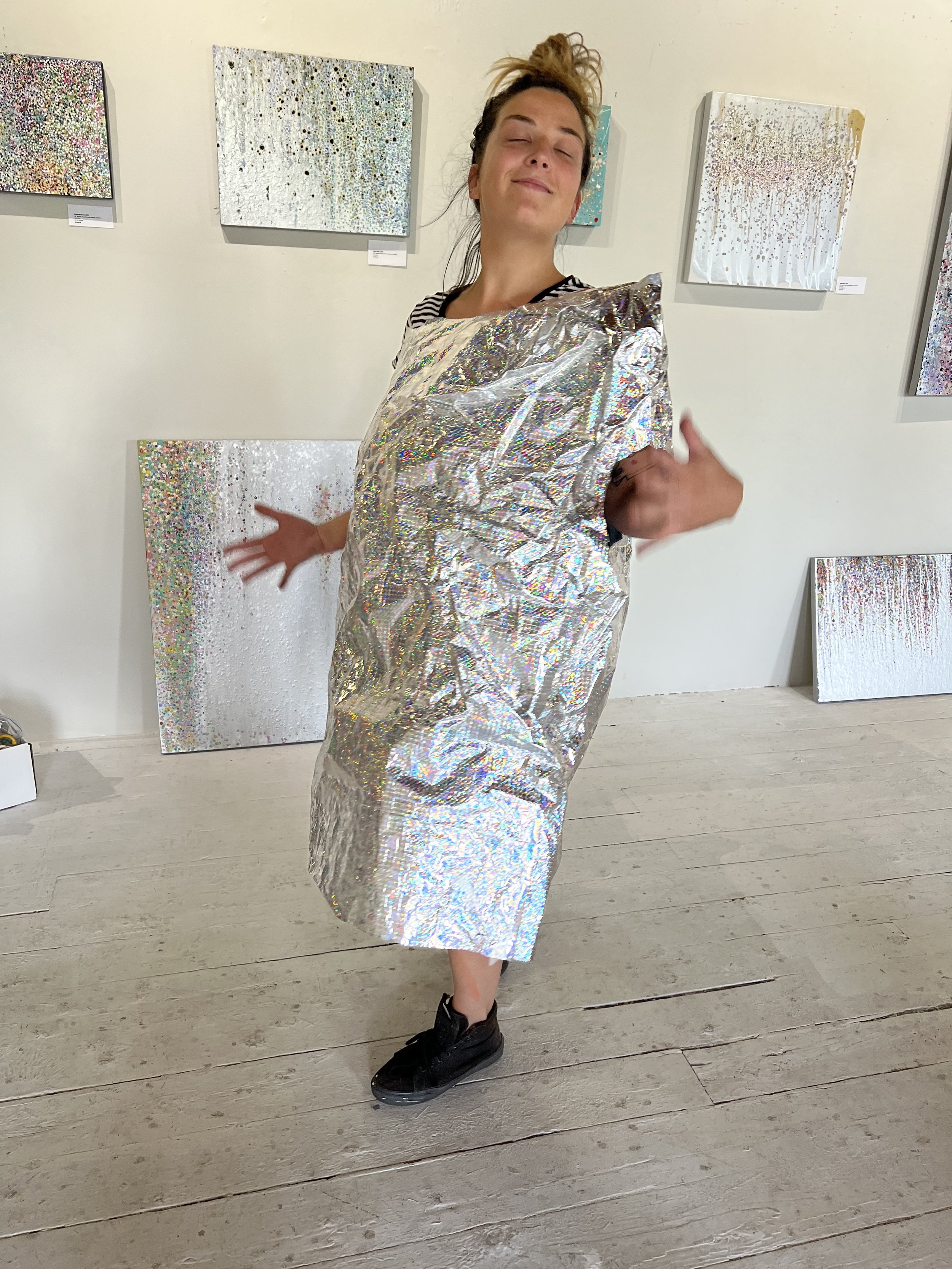
BLOG
BETWEEN PALETTE AND PROPAGANDA: Emil Nolde’s Troubled Dance With Nazi Germany
Nolde’s story warns that persecution alone does not equal resistance: an artist can be both victim and believer, oppressed by aesthetic policy yet thrilled by the ideology behind it. For museums and viewers, the question is not whether to hang his blazing reds and violets, but how—with letters, party documents, and wall texts that refuse the old romance of the misunderstood genius.
A SUITCASE IN THE OLIVE GROVE:Charlotte Salomon’s Fierce Waltz With History
The story starts with a battered leather suitcase, the kind that creaks when you unlatch it. Inside are 769 sheets of cheap French drawing paper, layered like stage flats: gouache scenes, penciled dialogue, and musical notes scrawled in the margins. Together they form Leben? oder Theater?—Life? or Theatre?—the autobiographical epic Charlotte Salomon painted in hiding between 1940 and 1942.
THE DELICATE UNWRAPPING: How Japonism Took Root in France
The story of Japonism in France begins, unexpectedly, with the hum of Dutch trade ships. For over two centuries, while Japan remained closed to most foreign contact under the Tokugawa shogunate’s sakoku policy, a small Dutch trading post on the artificial island of Dejima in Nagasaki Bay served as the sole Western gateway to Japanese goods. Porcelain, lacquerware, and rare silks quietly flowed into Europe, but few could imagine that humble woodblock prints, used at times as wrapping paper to cushion these exports, would one day ignite an artistic revolution.
MARGUERITE MATISSE: A Daughter's Courage in Occupied France
In dawn of the 20th century in France was marked by a vibrant and transformative artistic landscape, with the Impressionist movement having laid a fertile ground for the emergence of diverse modern art expressions.1 At the heart of this era stood Claude Monet, a foundational figure of Impressionism, celebrated for his profound ability to capture the subtle nuances of light and his dedication to exploring singular subjects through extensive series of paintings. Among his most iconic works are those depicting water lilies, a subject with which his name became intrinsically linked in the public consciousness.
HOKUSAI: A MASTER OF TWO WORLDS - HOW WESTERN ART SHAPED A JAPANESE ICON
Katsushika Hokusai (1760-1849) stands as a titan in the world of art, his iconic woodblock print, "The Great Wave off Kanagawa," instantly recognizable across cultures and time.1 His career, spanning over eight decades, yielded thousands of paintings, prints, and book illustrations, showcasing his mastery of ukiyo-e and an insatiable artistic curiosity.1 Yet, a fascinating question arises when examining his work: how did European art influence Hokusai, an artist who lived during a period when Japan was largely closed off from the Western world?
THE COLLABORATION OF CLAUDE MONET AND GEORGES CLEMENCEAU: Creating the Grand Decorations of Water Lilies for the Orangerie
In dawn of the 20th century in France was marked by a vibrant and transformative artistic landscape, with the Impressionist movement having laid a fertile ground for the emergence of diverse modern art expressions.1 At the heart of this era stood Claude Monet, a foundational figure of Impressionism, celebrated for his profound ability to capture the subtle nuances of light and his dedication to exploring singular subjects through extensive series of paintings. Among his most iconic works are those depicting water lilies, a subject with which his name became intrinsically linked in the public consciousness.
CLEMENT GREENBERG AND JACKSON POLLOCK, and a Defining Exhibition at Bennington College
The mid-20th century witnessed a seismic shift in the landscape of American art, with the emergence of Abstract Expressionism marking a departure from European traditions and establishing New York as a new global art center. At the heart of this transformative period were two towering figures: Clement Greenberg, a highly influential art critic whose formalist aesthetic shaped the discourse around modern art, and Jackson Pollock, an artistic innovator who revolutionized painting with his energetic "drip" technique
THE EASTERN WINDS IN ARLES: How Japanese Art Transformed Van Gogh's Vision
A significant and often overlooked influence on Van Gogh was the vibrant world of Japanese art, specifically ukiyo-e woodblock prints. These prints, depicting everything from serene landscapes to dramatic kabuki actors, captivated Van Gogh and fundamentally altered his artistic trajectory.
BONNARD’S JAPONISM: A DANCE OF PATTERNS AND PLANES
Pierre Bonnard, a luminary of the late 19th and early 20th century art world, was deeply captivated by the aesthetics of Japonism, the Western fascination with Japanese art and culture. While many of his contemporaries explored the bold, graphic aspects of Japanese prints, Bonnard absorbed a more nuanced, intimate understanding of the style, weaving it seamlessly into his own unique artistic vision. His paintings and prints reveal a delicate dance with Japanese aesthetics, marked by specific and recurring elements.
ARTISTS’ THINGS: 1929 René Lalique Gui Vase
I grew up with this Lalique vase in the entryway to our home. It was one of several pieces that my Grandmother bought in Paris in June of 1929. I know this because my father told me. The time of the purchase seemed significant as it was only a few months before THE CRASH. Later I discovered a receipt, which seems to be about the delivery of several other Lalique items — an ashtray, a box, and a perfume bottle — to her room at Hotel Crillon.
HILMA AF KLINT AND KANDINSKY: A Spiritual and Artistic Connection
Hilma af Klint and Wassily Kandinsky, two influential artists of the early 20th century, shared a profound interest in the spiritual and abstract realms of art. While their paths diverged in many ways, their work was deeply intertwined by their explorations of spirituality, physics, and music.
NATURE OR NURTURE
The nature/nurture question has been applied to artists at least as often as it has to athletes. And the verdict is still out. While I am distantly related to Stefan Lochner, a Northern European Gothic painter, his genes did not make an appearance in any of the intervening generations. As for nurture, there are some things in my background that, while not predictive, at least didn’t halt my development as an artist.
HENRY IN MY KITCHEN: THE INGREDIENTS OF AN ARTIST COLLABORATION
In 1981 I worked on a documentary with Michael Marton on the not-yet Pulitzer Prize-winning composer, Henry Brant. Marton’s approach to documentary filmmaking was to embed us with his subjects for a long period. This documentary coincided with when I was working on the drawings featured here, which ultimately led to a collaboration between Henry and me on a piece he did for the Holland Festival called Inside Track.
Here is a story I wrote at the time about just how embedded things could get.
OUT WITH THE OLD
I aspire to being anal compulsive, but I have to hire-out. I create chaos when I work. Things are moved and abandoned on the floor. Since I dip my hands into the paint as I work, I'll pull multiple gloves off and leave them on my paint table. But I like to have everything in order when I start. Paints lined up by color. Brushes by size and type. A place for everything and everything in its place. It's largely because once I am completely engaged in painting, the last thing I want to do is stop and look for a tool or find out I don't have the paint that I need.
A SURGEON’S KNIFE, A PAINTER’S BRUSH: The Intersection of Life and Art
My surgery took six hours. The narcotics kept me comfortable, and the hallucinations were entertaining. At one point I imagined the pillows under my arms were jewel-encrusted, and that they were also paintings that I was working on. And they were coming out so well. (Yes, that was the drugs talking.)
THREADING A NEW PATH: How a Disability Led to a New Artistic Style
In 2018, I developed bilateral trigger thumbs, which meant I could not tie my shoes, write my name, or hold a brush, much less paint. I wanted to keep painting while contemplating the possibility of surgery, but with both hands in metal braces, I had to devise a new way to work.


















